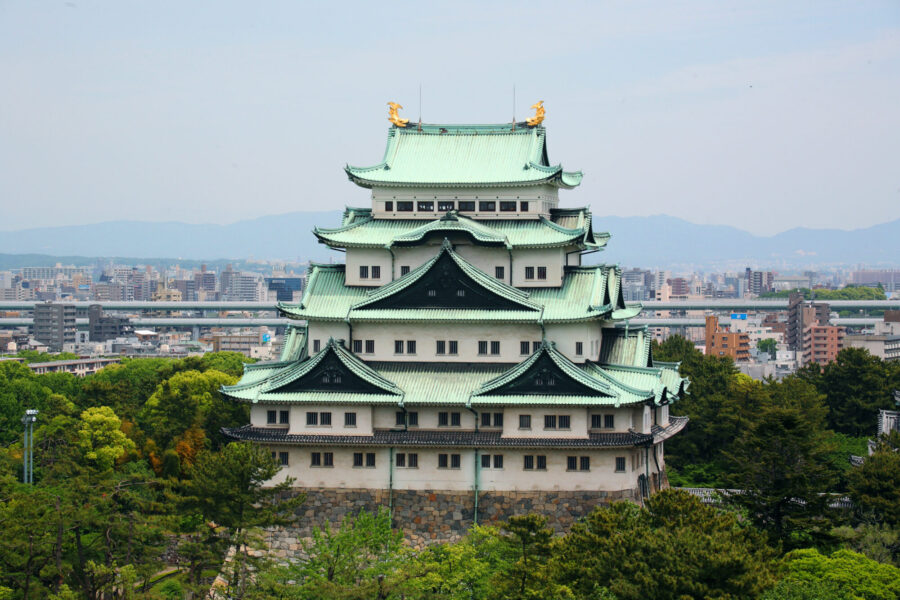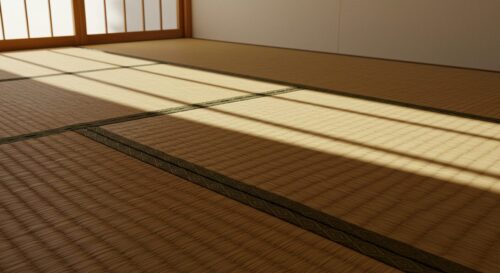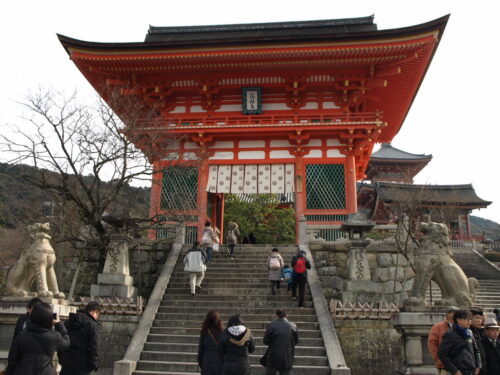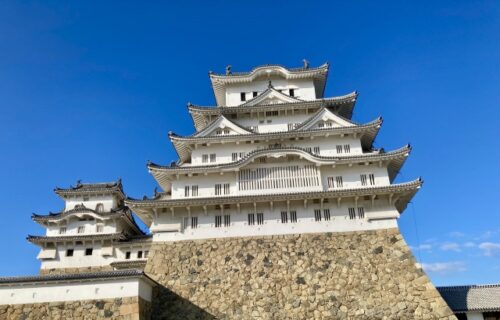Nagoya Castle’s Wooden Architecture: A Masterpiece of Japanese Craftsmanship
2025年11月01日
This article will guide you through the remarkable story of Nagoya Castle’s wooden architecture, allowing you to understand its profound significance as a masterpiece of Japanese craftsmanship and resilience. You will discover its rich history, from its initial construction and original splendor to its tragic destruction during World War II, and the subsequent meticulous reconstruction efforts that have brought parts of it back to life. By exploring the exquisite details of the Honmaru Palace and the ambitious plans for the future wooden reconstruction of the Main Keep, you will gain insight into the traditional techniques, such as intricate joinery and carpentry, that define this iconic structure. Ultimately, you will appreciate how Nagoya Castle’s wooden elements represent an invaluable cultural legacy, showcasing centuries of architectural ingenuity and artistic expression.

目次
- 1 Introduction to Nagoya Castle’s Wooden Architecture
- 2 The Historical Significance of Nagoya Castle’s Wooden Structures
- 3 Honmaru Palace: A Marvel of Wooden Architecture
- 4 The Main Keep and Future Wooden Reconstruction
- 5 Master Craftsmanship and Traditional Techniques
- 6 Nagoya Castle’s Wooden Architecture as a Cultural Legacy
- 7 Conclusion
Introduction to Nagoya Castle’s Wooden Architecture
Nagoya Castle, a distinguished landmark in Nagoya City, Japan, stands as a profound testament to traditional Japanese castle architecture and the unparalleled skill of its master craftsmen. Originally constructed at the dawn of the Edo period (1603-1868) under the directive of Tokugawa Ieyasu, the founder of the Tokugawa Shogunate, the castle served as the seat of the Owari branch, one of the three most influential Tokugawa family lineages.
The castle’s original structures, particularly the opulent Honmaru Palace and the towering main keep, were celebrated as masterpieces of wooden construction, showcasing the pinnacle of Shoin-zukuri architectural style and intricate artistic decoration. These wooden edifices were not merely functional; they were powerful symbols of the Tokugawa clan’s authority and wealth, adorned with lavish gold leaf and exquisite wall paintings by the renowned Kano school artists.
Tragically, a significant portion of Nagoya Castle, including its main keep and the Honmaru Palace, was destroyed during U.S. air raids in May 1945 towards the end of World War II. However, the commitment to preserving this invaluable cultural heritage led to ambitious reconstruction efforts. The Honmaru Palace, meticulously rebuilt using traditional materials and techniques based on extensive historical records and drawings, was fully reopened to the public in 2018, allowing visitors to experience its former splendor.
Today, Nagoya Castle continues its journey of restoration, with ongoing plans to reconstruct the main keep entirely in wood, mirroring its original design and emphasizing historical accuracy. This dedication to wooden restoration underscores the enduring appreciation for the traditional Japanese craftsmanship that defines this iconic fortress. The castle, designated a Special Historic Site, remains a vibrant symbol of Japan’s rich past and its enduring architectural legacy.
Key Architectural Components of Nagoya Castle
Nagoya Castle’s wooden architecture comprises several significant elements, each reflecting the advanced building techniques and aesthetic sensibilities of the Edo period. Below is an overview of its primary wooden structures:
| Component | Original Construction Period | Current Status / Significance |
|---|---|---|
| Honmaru Palace (Honmaru Goten) | Completed 1615 (Edo Period) | Authentically reconstructed in wood and reopened in 2018. Considered a masterpiece of Shoin-zukuri style, featuring extensive use of Hinoki cypress and lavish interior decorations. |
| Main Keep (Tenshu) | Completed 1612 (Edo Period) | Destroyed in 1945, rebuilt in ferro-concrete in 1959. Closed to the public since 2018 due to earthquake resistance concerns. Plans for a new wooden reconstruction are underway, aiming for historical accuracy. |
| Corner Turrets (Yagura) | Edo Period | Three original wooden corner turrets (Southeast, Southwest, Northwest) survived the 1945 air raids and are designated Important Cultural Properties, serving as strategic watchtowers and storage. |
The commitment to reconstructing and maintaining these wooden structures highlights Nagoya Castle’s role not just as a historical site, but as a living museum of traditional Japanese construction and artistry, continuously attracting visitors from around the globe.
The Historical Significance of Nagoya Castle’s Wooden Structures
Nagoya Castle, a paramount example of Japanese castle architecture, holds immense historical significance, particularly concerning its original wooden structures. From its inception as a strategic stronghold during the Edo period to its tragic destruction in World War II, the castle’s timber framework tells a compelling story of power, artistry, and resilience. It served not only as a military fortress but also as a cultural beacon, embodying the pinnacle of traditional Japanese craftsmanship.
Original Construction and Early Splendor
The construction of Nagoya Castle was initiated by Tokugawa Ieyasu, the founder and first shogun of the Tokugawa shogunate, in 1609, with work commencing in 1610. His primary motivation was to solidify his newly established rule after the decisive Battle of Sekigahara and to create a strategic defense against the Toyotomi clan, centered in Osaka. The castle was also intended to serve as the seat for the Owari branch, one of the three main lineages of the Tokugawa family, making it a crucial political and military center.
The construction was a monumental undertaking, involving over 20 feudal lords (daimyo), including renowned figures like Katō Kiyomasa and Fukushima Masanori, who were ordered to contribute labor and materials. Nakai Masakiyo, a prominent architect who had previously worked on other major castles such as Nijō and Edo Castle, directed the building efforts, establishing the architectural standards for Tokugawa shogunate castles. The main keep was completed by December 1612, while the magnificent Honmaru Palace followed, reaching completion in February 1615.
Nagoya Castle quickly became one of the largest and most impressive castles in Japan. Its grandeur was epitomized by the towering main keep, which boasted the largest floor space of any castle keep at the time, crowned with iconic golden shachihoko (mythical dolphin-like creatures) on its roof. The Honmaru Palace, in particular, was celebrated as a masterpiece of Shoin-zukuri architectural style, a sophisticated form of residential architecture favored by samurai. Its interior was lavishly decorated with exquisite wall and sliding door paintings by artists of the prestigious Kanō school, showcasing the era’s highest artistic and craftsmanship standards. Such was its cultural and architectural value that Nagoya Castle, including its palace and tower keeps, was designated Japan’s first National Treasure in 1930.
Key Construction Milestones
| Component | Completion Year | Significance |
|---|---|---|
| Construction Commencement | 1610 | Ordered by Tokugawa Ieyasu to consolidate power and establish the Owari Domain seat. |
| Main Keep | 1612 | One of the largest in Japan, featuring iconic golden shachihoko. |
| Honmaru Palace | 1615 | A masterpiece of Shoin-zukuri architecture, adorned with Kanō school paintings. |
| National Treasure Designation | 1930 | Recognized as Japan’s first castle to receive this prestigious status. |
Destruction During World War II
Despite its historical and cultural significance, Nagoya Castle’s wooden structures faced a devastating fate during World War II. During the war, the castle served a critical role as the regional army headquarters and an administrative office, making it a target for Allied forces.
On May 14, 1945, just months before the war’s end, Nagoya Castle was subjected to intense U.S. air raids, specifically firebombing. The incendiary bombs quickly engulfed the predominantly wooden structures, reducing much of the castle complex to ashes. The destruction was catastrophic, resulting in the complete loss of the main keep, the small keep, the golden shachihoko, the Honmaru Palace, and the northeast turret, among many other buildings. While the stone walls and foundations largely survived, the architectural masterpieces crafted over three centuries earlier were tragically lost, marking a profound loss of cultural heritage for Japan.
Honmaru Palace: A Marvel of Wooden Architecture
Nagoya Castle’s Honmaru Palace, originally completed in 1615, stands as a magnificent example of traditional Japanese wooden architecture, particularly the refined Shoin-zukuri style. Initially serving as the residence and administrative offices for Tokugawa Yoshinao, the first lord of the Owari domain, it later became accommodation for the Shogun on visits to Kyoto. Renowned for its opulent interiors and advanced craftsmanship, the palace was tragically destroyed during the air raids of May 1945, along with much of the castle complex.
Reconstruction and Authentic Craftsmanship
The reconstruction of Honmaru Palace represents a monumental achievement in preserving Japan’s cultural heritage. Commencing in 2009, the meticulous rebuilding project spanned nearly a decade, with its final phase opening to the public in 2018. This ambitious undertaking was not merely a replication but an authentic restoration, relying on an extraordinary wealth of historical documentation. Key resources included 1,047 surviving Edo period sliding doors, screens, and panels designated as Important Cultural Assets, over 300 pre-war architectural survey drawings, approximately 700 photographs (some taken by the 14th lord, Tokugawa Yoshikatsu), and around 2,000 original foundation stones.
Skilled traditional Japanese artisans and craftsmen were employed, utilizing centuries-old techniques and authentic materials to recreate the palace’s original splendor. The construction predominantly features valuable hinoki cypress wood, celebrated for its fragrance and durability, while high-quality pine wood was also incorporated in areas like the Kuroki Shoin. Even intricate details, such as the black lacquered gables of the Genkan (entrance hall) topped with multi-layered Japanese cedar kokera shingles fastened with bamboo nails, reflect the commitment to historical accuracy and traditional methods.
Interior Design and Artistic Elements
The interior of Honmaru Palace is a dazzling display of Edo period artistry, characterized by lavish gold leaf, intricate wall paintings (shōhekiga), and ornate decorative metal fittings. These magnificent artworks were primarily executed by master artists of the renowned Kanō School, including Kanō Sadanobu, showcasing their exceptional skill and aesthetic.
The palace is functionally divided into several distinct sections, each with its own specific purpose and decorative theme:
| Section | Primary Function | Notable Artistic Elements |
|---|---|---|
| Genkan (Entrance Hall) | Welcoming high-ranking guests; divided into rooms based on visitor status. | Gracefully curved gabled roof over the Kurumayose (carriage foyer). Gold-leaf sliding door paintings and intricate transom carvings. The “First Room” features an ajiro ceiling (woven bamboo strips) and intimidating paintings of fierce tigers and leopards (Chikurin Hyoko Painting), painted from descriptions rather than direct observation. |
| Omote Shoin (Main Hall) | Official administrative offices of the Owari lords. | Includes the Jodan-no-ma, the lord’s audience chamber, which is the most elaborately decorated and elevated to signify authority. Features Zashiki-Kazari ornamental room design, a recessed writing stall, a tokonoma alcove with a large pine tree painting, and a secondary alcove with split-level shelving. Paintings of auspicious cherry blossoms and pheasants are also present. |
| Taimenjo (Reception Hall) | Entertainment and living quarters for the lord. | Reflects the formal Shoin-zukuri style, emphasizing etiquette and status through its design. |
| Jorakuden (Shogun Accommodation Facilities) | Exclusive accommodation for the visiting Shogun, completed in 1634. | Highly decorated to reflect the Shogun’s supreme status. |
The exquisite design and artwork of Nagoya Castle’s Honmaru Palace were so influential that many of its features were later incorporated into Kyoto’s Nijo Castle Ni-no-Maru Palace, which remains a National Treasure and World Heritage site today. To maintain an authentic Edo period atmosphere, the restored palace features minimal lighting and intentionally omits modern amenities such as air conditioning and contemporary toilets within its main structure.
The Main Keep and Future Wooden Reconstruction
The Original Wooden Tenshu
Nagoya Castle’s original main keep, known as the *tenshu*, was a magnificent wooden structure completed in 1612 under the orders of Tokugawa Ieyasu, the founder of the Tokugawa shogunate. Its construction was a massive undertaking, involving some 20 feudal lords, and it quickly became the heart of one of Japan’s most important castle towns. Boasting the largest floor space of any tower keep in Japan at the time, it was distinguished by its iconic golden *shachihoko* (mythical tiger-fish ornaments) atop its roof. The *tenshu* was a connected structure, featuring a large keep on the north and a smaller keep on the south, linked by a *watari-yagura* (connecting turret).
Recognized for its outstanding architectural techniques and historical significance, Nagoya Castle was the first castle in Japan to be designated a National Treasure in 1930. However, its grandeur was tragically cut short during World War II. On May 14, 1945, while serving as the Tokai district army headquarters, the main keep, along with other key structures like the Honmaru Palace, was completely destroyed by fire during U.S. air raids on Nagoya.
Plans for a New Wooden Main Keep
Following its destruction, a steel-reinforced concrete replica of the main keep was constructed in 1959, largely funded by public donations. This modern reconstruction served as a museum for decades, but due to aging and concerns about its earthquake resistance, it was closed to the public in May 2018.
Nagoya City has since embarked on an ambitious project to reconstruct the main keep using traditional wooden methods, aiming for a “historically accurate” timber structure that faithfully reproduces the original design, materials, and techniques. This initiative, first proposed by Nagoya Mayor Takashi Kawamura in 2009, officially launched its fundraising campaign in July 2017, with a budget estimated to be in the billions of yen. An abundance of historical materials, including Edo period architectural plans, old photographs, 1932 survey measurements, and the comprehensive “Kinjo Onkoroku” records (1821-1902), are guiding this intricate restoration. The project also leverages modern technology, converting all architectural information into Building Information Modeling (BIM).
Despite initial hopes for completion by 2022, the project has faced delays. The current target for the new wooden keep is not expected before 2032. A significant point of public debate and a challenge to “historically accurate” reconstruction is the inclusion of an elevator for accessibility. While the existing concrete keep had a lift to the fifth floor, the proposed wooden reconstruction currently plans for only a small lift to the first level, raising concerns about equal access for visitors. This highlights the complex balance between preserving historical authenticity and meeting modern accessibility and safety standards, including fire protection and emergency evacuation strategies.
| Aspect | Details |
|---|---|
| Original Main Keep Completion | 1612 |
| Designated National Treasure | 1930 |
| Destruction Date | May 14, 1945 (WWII air raids) |
| Current Concrete Reconstruction | Completed 1959. Closed to public since May 2018. |
| Wooden Reconstruction Goal | Authentic, historically accurate timber structure |
| Initial Target Completion | 2022 |
| Revised Target Completion | Not before 2032 |
| Key Challenge | Balancing historical accuracy with modern accessibility requirements (elevator debate) |
Master Craftsmanship and Traditional Techniques
Joinery and Carpentry of Nagoya Castle
Materials Used in Nagoya Castle’s Wooden Architecture
| Material | Characteristics | Primary Use in Nagoya Castle |
|---|---|---|
| Hinoki (Japanese Cypress) | Durable, fragrant, rot-resistant, aesthetically pleasing | Extensive use in Honmaru Palace for structural elements and interiors |
| Pine Wood | High quality, strong | Used in specific areas like the Kuroki Shoin of Honmaru Palace |
| Sugi (Japanese Cedar) | Versatile, common | Thinly cut for *kokera* shingles on roofs |
| Plaster | Natural materials, fire-resistant, humidity control | Exterior and interior wall surfaces |
| Gold Leaf | Decorative, opulent finish | Adorning walls and screens in Honmaru Palace |
Nagoya Castle’s Wooden Architecture as a Cultural Legacy
Nagoya Castle stands as a profound symbol of Japan’s rich cultural heritage and historical significance, embodying centuries of architectural prowess and artistic expression. Its wooden structures, both original and meticulously reconstructed, serve as a tangible link to the Edo period and the enduring legacy of traditional Japanese craftsmanship.
Preserving Traditional Craftsmanship and Cultural Identity
The castle’s designation as a Special Historic Site by the Japanese government in 1952 underscores its outstanding architectural techniques and historical importance. Furthermore, the original Honmaru Palace and the Main Keep were among Japan’s first castle structures to be designated as National Treasures in 1930, highlighting their immense value even before their destruction in World War II.
The reconstruction of the Honmaru Palace, completed in 2018, is a testament to a concerted effort to preserve and transmit traditional Japanese building techniques. This ambitious project meticulously replicated the original Edo period architecture, utilizing historical plans, over 700 photographs, and 1,047 surviving sliding doors and panels as references. The endeavor brought together numerous traditional craftsmen, including carpenters, stonemasons, plasterers, and metalsmiths, ensuring that invaluable ancient skills were revived and passed down to a new generation. The result is a magnificent recreation that allows visitors to experience the opulent world of Edo-period art and power, with lavish interiors adorned with gold leaf and intricate wall paintings.
Educational Value and Tourism Impact
Nagoya Castle serves as a vital educational resource and a major tourist attraction, offering visitors a unique opportunity to connect deeply with Japan’s history and culture. The castle grounds and reconstructed palace feature extensive exhibits showcasing samurai armor, weaponry, traditional Japanese art, and historical artifacts, providing profound insights into the Tokugawa shogunate and life during the Edo period. The detailed craftsmanship and artistic elements within the Honmaru Palace, from its Shoin-zukuri style to the intricate wall paintings, vividly illustrate the aesthetics and values of that era.
The castle’s cultural significance extends to its role in shaping the modern city of Nagoya, having flourished as the residence of the Owari-Tokugawa family for 260 years and serving as a crucial political and military center. Today, it remains a cherished symbol of the city, attracting visitors from around the world to appreciate its beauty and historical depth.
The Future of Nagoya Castle’s Wooden Legacy
The commitment to preserving Nagoya Castle’s wooden architecture continues with the ongoing project to reconstruct the Main Keep in wood, aiming to restore it to its original Edo-period glory. This initiative reflects a growing appreciation for traditional architecture and cultural heritage in the 21st century, ensuring that the legacy of Japanese carpentry and construction techniques endures for future generations. The project, while facing delays, seeks to recreate the castle space as it was during the Edo period, offering an even more authentic historical experience.
In essence, Nagoya Castle, through its meticulous reconstructions and ongoing preservation efforts, stands as a testament to Japan’s enduring cultural identity and its profound commitment to architectural heritage. It functions not merely as a historical landmark but as a dynamic center for cultural education and the perpetuation of invaluable traditional skills, ensuring its legacy continues to inspire and inform for centuries to come.
For more information, please visit the official Nagoya Castle website: Nagoya Castle Official Website and explore details about the Honmaru Palace at Honmaru Palace Guide.
Here is a summary of Nagoya Castle’s key designations and reconstruction efforts:
| Feature/Designation | Original Status
(Pre-WWII) |
Destruction
(WWII) |
Reconstruction/
Restoration |
Significance for Legacy |
|---|---|---|---|---|
| Honmaru Palace | National Treasure (1930) | Destroyed (1945) | Wooden Reconstruction (2009-2018) | Revival of Edo-period Shoin-zukuri architecture and traditional craftsmanship. |
| Main Keep (Tenshukaku) | National Treasure (1930) | Destroyed (1945) | Reinforced Concrete (1959) / Planned Wooden (by 2032) | Symbol of city’s resilience; future wooden reconstruction ensures continuity of traditional building techniques. |
| Nagoya Castle (Overall) | N/A | N/A | Special Historic Site (1952) | Recognizes outstanding architectural techniques and historical significance. |
Conclusion
Nagoya Castle stands as a profound testament to Japan’s enduring architectural heritage, a symbol of both its historical grandeur and its remarkable resilience. Though tragically lost to the ravages of World War II, the concerted efforts to restore its wooden structures have brought back to life a significant piece of the nation’s past. The castle’s journey from destruction to meticulous reconstruction underscores a deep commitment to preserving traditional Japanese craftsmanship and cultural identity.
| Architectural Element | Significance to Wooden Architecture | Status/Future Outlook |
|---|---|---|
| Honmaru Palace | A paramount example of the shoin-zukuri style, renowned for its intricate wooden framework, lavish interior, and exquisite Kano School paintings. Its reconstruction utilized authentic Edo period techniques and materials, making it a living museum of traditional Japanese artistry. | Fully reconstructed and open to the public since 2018, meticulously replicating its original splendor. |
| Main Keep (Tenshu) | The original main keep was a monumental wooden structure, embodying the pinnacle of early Edo period castle construction. Its planned wooden reconstruction aims to restore this architectural marvel to its historically accurate form. | The current ferro-concrete structure, built in 1959, was closed to the public in 2018 due to seismic concerns. Plans for a new wooden main keep are underway, though completion is not expected before 2032. |
The reconstruction of Honmaru Palace, completed in 2018, exemplifies the dedication to authentic craftsmanship. Utilizing a wealth of historical documents, including Edo period architectural plans and pre-war photographs, master carpenters and artisans meticulously recreated the palace’s intricate joinery, ornate carvings, and stunning interior decorations. This monumental undertaking showcases the timeless skills and traditional techniques that have been passed down through generations, ensuring that the beauty and structural integrity of traditional Japanese wooden architecture are maintained.
Looking ahead, the ambitious plan to reconstruct the main keep entirely in wood represents the next chapter in Nagoya Castle’s restoration. This project, while facing challenges related to modern building standards and accessibility, aims to revive the castle’s original form, further solidifying its role as a beacon of historical preservation. The commitment to employing traditional methods and materials in this endeavor highlights a profound respect for the past and a desire to provide future generations with an authentic experience of this magnificent structure.
Ultimately, Nagoya Castle’s wooden architecture, from the faithfully restored Honmaru Palace to the envisioned wooden main keep, serves as a powerful symbol of Japanese ingenuity, artistic excellence, and cultural resilience. It stands not merely as a historical relic, but as a vibrant, evolving testament to the enduring legacy of Japanese master craftsmanship and the nation’s unwavering commitment to its priceless heritage. Visitors from around the world are invited to witness this blend of history and rebirth, appreciating the intricate details and the grand vision that continue to shape this iconic landmark. For more information, please visit the Nagoya Castle Official Website and Japan Guide’s Nagoya Castle page.



